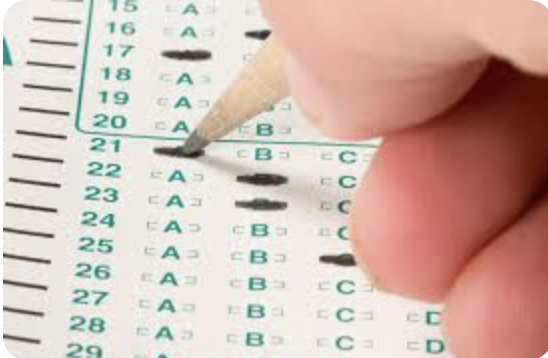
The California Assessment of Student Performance and Progress or CAASPP test, is a standardized test administered by the California Department of Education taken annually from third grade through eighth grade, as well as junior year of high school. The test is taken over the course of three days and has three categories: math, science, and language arts. Introduced in 2014, the test is required by federal and state law, and is used to evaluate students’ preparation for college. The data is available to CSU admissions officers, and CAASPP scores can be used as placement qualifiers, as well as to obtain a California Seal of Biliteracy (which requires an additional test). At the district level, scores are used to identify gaps between students, allowing schools to compare their testing results with others. This helps schools better cater to the needs of their specific community, as well as be able to observe any demographic/situational or curriculum-based discrepancies. At the student level, some say that taking the test helps students in the future both in college and the workplace, because it tests students based on critical thinking and problem solving skills in a high pressure environment.
However, many question the effectiveness and accuracy of the CAASPP test. A lot of material that the CAASPP test focuses on isn’t taught in standard classes, or is more likely to be taught in AP/Honors classes, meaning that it inherently favors AP/Honors students. The test also cannot accurately assess a student’s knowledge, due to the fact that every student has a different learning style – this is especially the case with students with learning/developmental disabilities. The testing environment is stressful and high-pressure, which can not only have a negative impact on a student’s mental health, but also on their test score.
Some high schools have experienced an extreme drop in CAASPP test scores, due to the fact that students who opt out immediately receive a failing score. Because of this, many school administrators strongly suggest participating in the test. Some also believe that a general apathy among students when it comes to standardized tests and even other school assignments that they deem unimportant, still permeates through the student body following the COVID-19 pandemic.
Outside of that, the mounting anxiety that many students feel surrounding their other exams or projects, as well as the fact that most juniors take multiple AP courses that often require hours of weekly attention will cause many to see the CAASPP as an afterthought. Because many see their CAASPP test scores as inconsequential, or are often far more focused on building a “perfect” resume for university admissions officers, their performance on the CAASPP may very well be a completely inaccurate assessment of their skills as a student.
Ultimately, it comes down to properly evaluating the role that the CAASPP test plays, and how it applies to the rapidly transforming modern era of education. How does the CAASPP test and other tests like it affect not only the school, but the student body? Is it time to reform the system as a whole?







